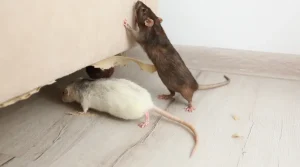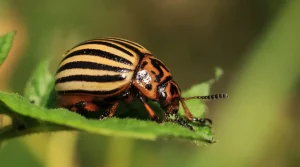More and more ants may be invading your California house. This is because these insects have suddenly become a major concern throughout the state of California. It’s possible that some individuals won’t be frightened by it, but for others it could be downright horrifying. Then why do you suspect an insect invasion? This page will discuss the various species of ants that can be encountered in California, as well as solutions to ant infestations.
Can ants really cause damage to your home?
Just how much of a threat are ants, really? is a common inquiry, and we’re happy to answer it! Put simply, a great deal.
The first problem is that ants can ruin your stuff. They are so well-liked because they can gnaw through any material, including hard surfaces like metal, glass, and wood. The species will vary in the amount of damage they can do to your timber fence, deck, or other structures. There are a few ways in which ants might contaminate your food. This is due to the fact that everyone traveling to your home will inevitably encounter garbage and other unsanitary areas. This poses a health risk since it facilitates the entry of insects and other pests into the food supply. One final thought: ants might be a permanent nuisance. These unexpected pests have a keen sense of smell, which they use to their advantage while foraging for food. Be prepared to share your home with cockroaches, spiders, rodents, and other vermin that eat ants if you have an ant infestation.
Common House Ants
The pleasant climate and plenty of greenery in California make it an attractive home for ants. This is accurate, and it explains why ants will try to invade your home in quest of sustenance, hydration, and shelter. The most common house invaders are the following species of ants:
Argentine Ants
In California, Argentine ants are a common problem. They barely exceed an eighth of an inch in length. They have silky bodies that range in brown tones. Numerous worker ants populate Argentine ant nests. They build their nests under the earth, or otherwise conceal them with rocks, logs, or whatever else out of sight. In order to settle in, they search for concealing spaces like the depths of drawers and the crevices of walls. You can detect their musty presence in your home by crushing one of these bugs and inhaling the resulting odor. Argentine ants are opportunistic eaters who will feast on just about everything, including other insects, meat, and sweets. Get rid of the grass and plants around your home, patch up any openings, and store all sugary foods in airtight containers to ward off Argentine ants.
Carpenter Ants
Some of the worst ants you encounter in California are carpenter ants. These bugs can be anywhere from 3/8 inch to 1/2 inch in length and are either black or dark brown in color. In order to use the wood for nesting, carpenter ants bore holes in it. They can cause a lot of harm to your property if you don’t get rid of them. Carpenter ants prefer to nest in live, healthy trees if given the option. Otherwise, they’ll go outdoors and pick a stump or dead tree. They are welcome to choose a seat wherever they like once they are inside your home.
If left unchecked, carpenter ants can cause as much structural damage to a building’s interior as termites. Kill insects and patch up any holes using boric acid, then get rid of lingering odors with dish soap and scented oils.
Grease Ants
Thief ants are another name for grease ants, a type of tiny bug. Their size is roughly 1/625 of an inch. Their moniker stems from the common practice of stealing food from neighboring ant colonies and bringing it home. Thief ants are often yellow or a light brown tint, and they have no waists. The lower half of their body is a deeper shade than the rest. At the very end of their bellies, you can detect a little stinger. There can be as many as 300,000 individuals in a single thief ant colony. It is possible for many queens to coexist within a single colony. Up to forty eggs can be laid by each queen daily. The eggs hatch into larvae after two weeks. There is a lengthy metamorphosis process that the larvae must complete before they can begin foraging as adults. Due to its massive size and tenacious foraging, this species is frequently misidentified as a pharaoh ant. To eradicate a thieving ant colony, one must first locate its nesting site using bait stations, which one must place in close proximity to other ant nests. Once you’ve located the nest, the following stage will become clear.




